The reason behind me writing these lines is not nostalgic. I´m not going to tell you past times were better than current times at all. I´m a true innovation believer. The world of Hi-Fi, a world that I know like the palm of my hand and love just as much, is getting better by the day.
That being said, I always get questions about past glories, the gear that shaped my ears and my heart into an audiophile. This is a post aimed to answer that question and also to encourage all people to try vintage gear out and hear the difference rather than believing the retro hype.
Join me in this trip to the past, the legacy and the glory of (IMHO) the best vintage stereo receivers of all time.
Page Contents
Marantz 2500
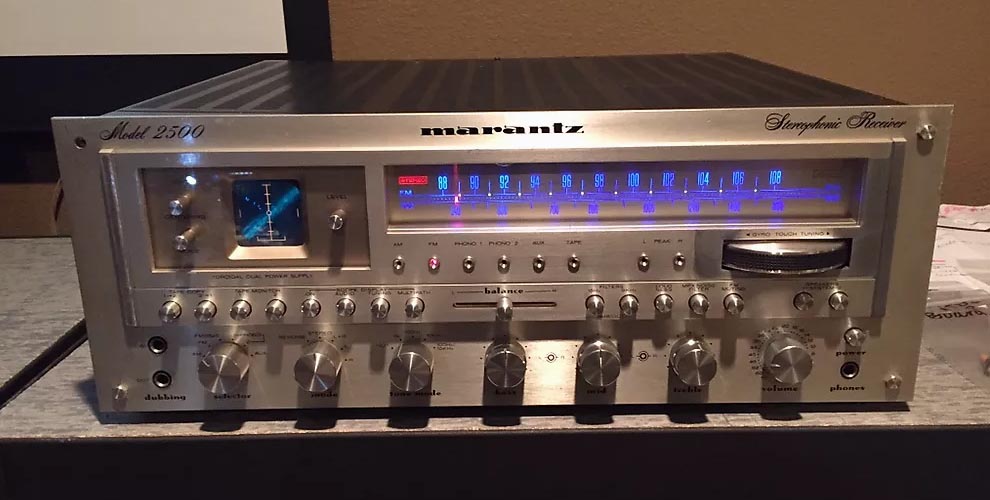
I have never owned any piece of hi-fi gear (and I owned a lot) as precise as the Marantz 2500. It has a built-in oscilloscope to nail those radio stations perfectly and check for true stereo sound.
The power is 250 watts per channel and it boasts its perfect low-frequency punch from a dual-wound toroidal massive transformer that beats in its very heart. It is not divided into two parts as the SANSUI and back then, the wooden casing was optional.
As far as connections go, you can cover most of your basics always bearing in mind that you are talking about technology from 40 years ago. With this I mean that none of us buys a Marantz 2500 and spends almost $5,000 because it can fit all of our audio sources; we do it because it sounds amazing.
Yes, the Marantz is so loud and clear that will either breathe a new life into your speakers or make you want to get rid of them. True Hi-Fi equipment is needed for this beast to show its true colors.
McIntosh 1900
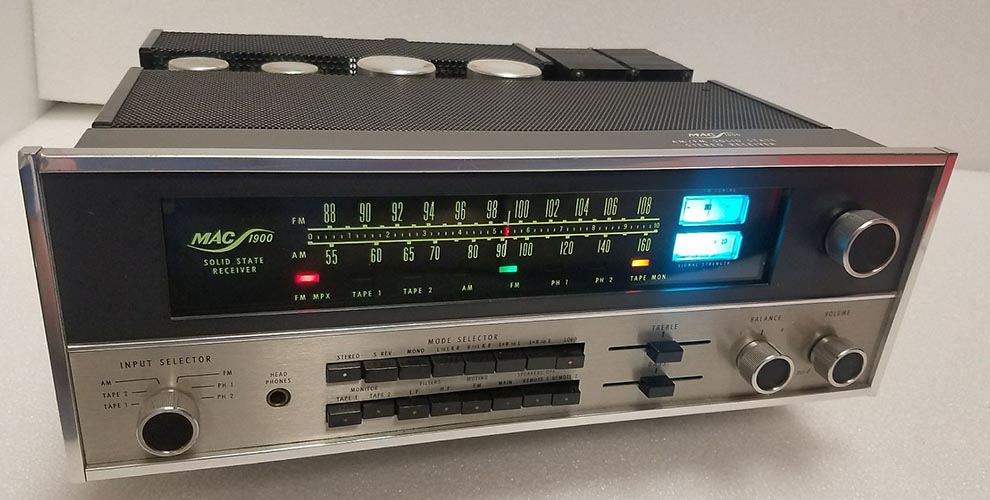
Back in the day, when you heard McIntosh, you didn´t think of a little apple, but of truly Hi-Fi, state of the art equipment. I would dare anyone today to plug in a McIntosh 1900 stereo receiver and compare the sound to any other in the market. Yes, it is that good.
The power is way more moderate with 55 watts of pure muscle per channel and a small enclosure to fit most shelves and spaces. This volume will be enough for any medium-sized room and with a harmonic distortion of less than 0.20% you can crank it up as much as you want.
If you want to give your first steps into the true Hi-Fi wonders of all times, you can shop for one of these amazing apparatus for less than $2,000 for sure. Couple it with good speakers and rediscover your vinyl collection with perfect, punchy low end, crisp clear highs, and defined mids. The 1900 by McIntosh paved the way for smaller stereo receivers from 1971 to 1978 and is still sounding wonderful today.
Kenwood KR-9050

This hidden pearl by Kenwood has always been second in line after the KR-9600 for the wrong reasons. To begin with, it is more powerful boasting 200 watts per channel versus 160 watts in the 9600. Second, the design of the 9050 is completely flawless while the 9600 took criticism over the years for malfunctioning after years of use.
To be honest, Kenwood never manufactured anything even close to this massive stereo receiver ever again. The filters, boosters, attenuators, equalizers, choices of speakers, and the possibility to bypass them all at the flick of a switch are just amazing. The Kenwood KR-9050 is very loud, very clear, and also very versatile.
The toroidal transformer living inside is massive and the microphone input can give you a nice time of family karaoke in case you like it. The only drawback I see in this apparatus is that behind the steel wheels and switches you have plastic parts that might be gone with time. Everything is replaceable, but moving this monster to the technician´s shop is no easy task.
SANSUI G-33000
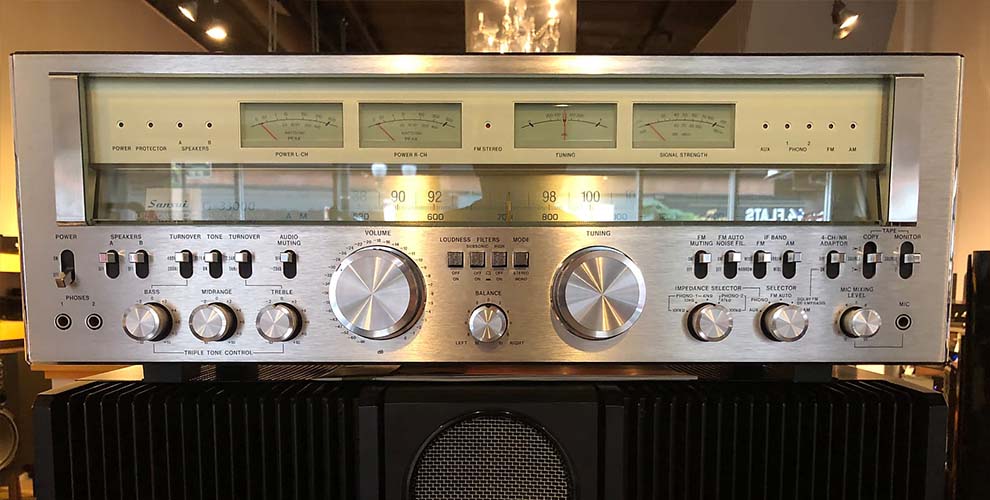
If I had to describe this majestic piece of gear in one word, it would be monstrous. It is a two-piece apparatus because SANSUI knew that it is way too heavy to put on a shelf without breaking it in half. It boasts a humongous 300 watts of power per channel from toroidal transformers that are not only huge but super clean and natural. The unit is ventilated by a silent fan that kicks in automatically.
The most important aspect of the SANSUI G33000 is how powerful and clear the low end is. You have some meters in the front part along with all the switches to handle the amazing array of options available. It was manufactured in 1979 and hence, the mid-range section will sound a little weird if you are a 90s child because back then it was all about scooping mids and killer low end.
You can fix that from the three-band equalizer. There is room to plug two sets of headphones, a microphone input, and lots of switches to correct the sound from tone defeat to a subsonic filter. If you have the room and want to spend $10,000 on one of the best-sounding preamp and power amp in history, this is an amazing choice.
Pioneer SX-1980
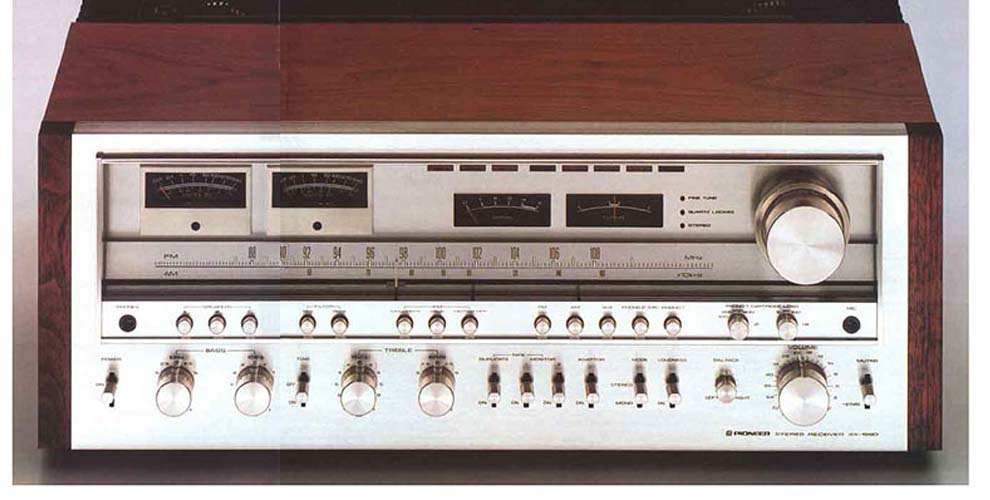
If you ever wonder where Pioneer got its reputation for being one of the best audio brands in the world, the answer is right here. This monster stereo receiver boasts 270 watts per channel and when it came out it was Hi-Fi lovers’ summit.
The harmonic distortion rate is 0.03% which means that you get clarity and punch all the way from soft to deafening (believe me this thing can get loud!). The huge toroidal transformers are well dissipated and regardless of the use you give to it, you´ll never have any heat problems.
You can plug two different turntables into it and have a three-band equalizer to tune the sound to your liking. It features color-light indicators, VU meters, and all the wooden enclosure-meets-brushed-aluminum magic of the era. If you want a huge room to sound definitely amazing, you can maybe find one of these beasts for $5,000. If you take good care of it, you´ll have a lifetime of fun and pleasure with your Pioneer SX1980.
Technics SA-1000

Panasonic´s hi-fi division was responsible for some major achievements throughout its life. Technics SA-1000 by Panasonic came out into the market in 1977 with a beast capable of producing 330 watts per channel at 0.03% of harmonic distortion. That is what I call loud and proud!
It is cool to see in the setup of this amazing stereo receiver the mix of vu meters along with the emerging color led lights to indicate when the audio was reaching the red zone. The truly attenuating volume knob works great to tame the power of the massive transformer (non-toroidal).
Now, going to the sound department, paired with the right pair of 8 ohms speakers, this thing will blow the ceiling out of most rooms. The bottom end as you roll the volume knob up is going to realign your internal organs while the crystal clear high-end will redo your hair. They are not easy to get or cheap at about $5,000 but it is all you will ever need in terms of power and sound quality.
Yamaha CR-3020
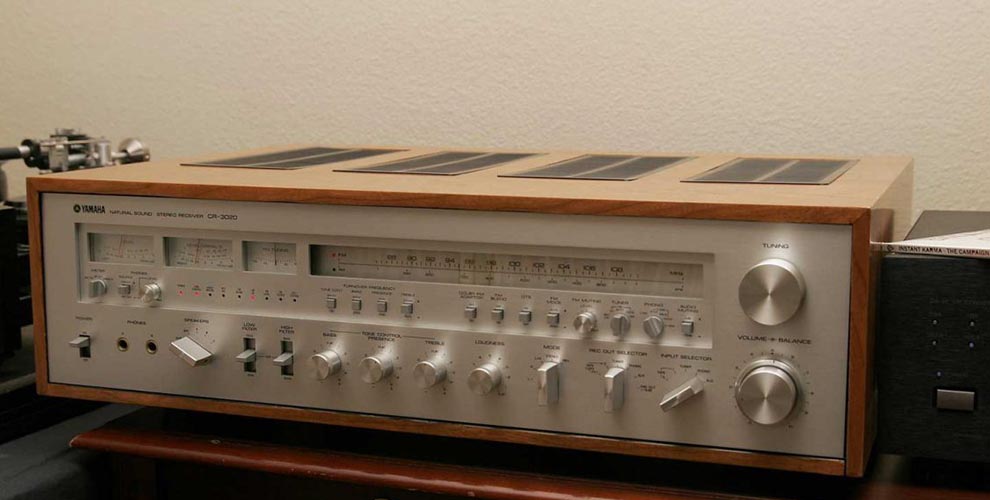
Harmonic distortion never got so close to zero as with the Yamaha´s oldest brother on the CR stereo receivers line. It boasts 160 watts per channel and at the same time has a 0.01% harmonic distortion ratio. The wooden enclosure is big and heavy and the construction is completely flawless from beginning to end.
The sonic capabilities of this beast are very wide because you can simply tweak it from the bass, treble, middle, and presence knobs as well as apply the filters. You can also select any kind of speaker configuration including a subwoofer. The craftsmanship and the audio quality on this stereo receiver make it the best $3,000 you can ever spend on improving the way you listen to music at home.
Yamaha is one of the biggest names in Hi-Fi audio and it all started right around here, in the 1970s making timeless pieces that continue to blow the mind of generation after generation.
